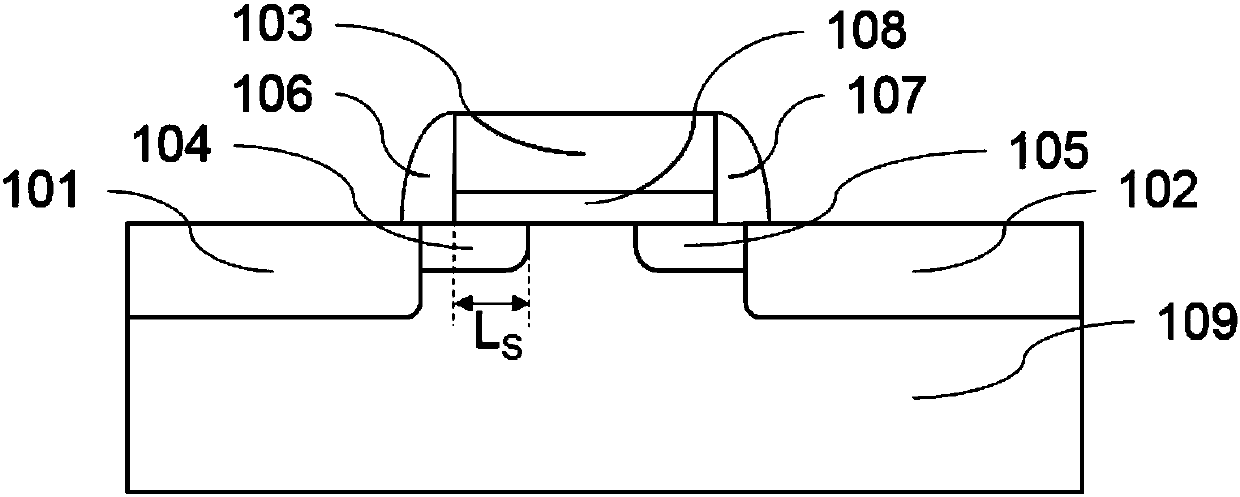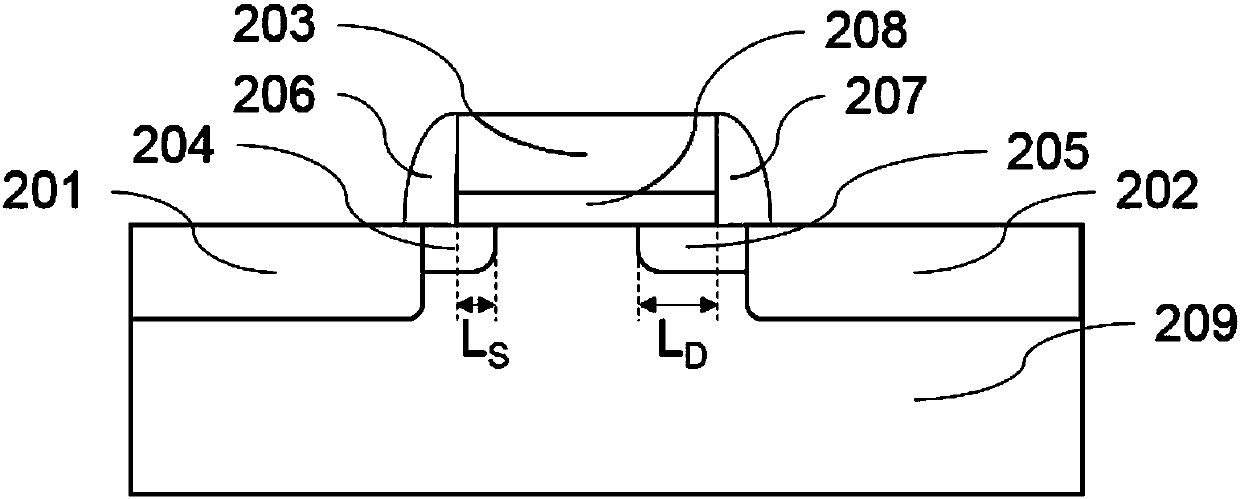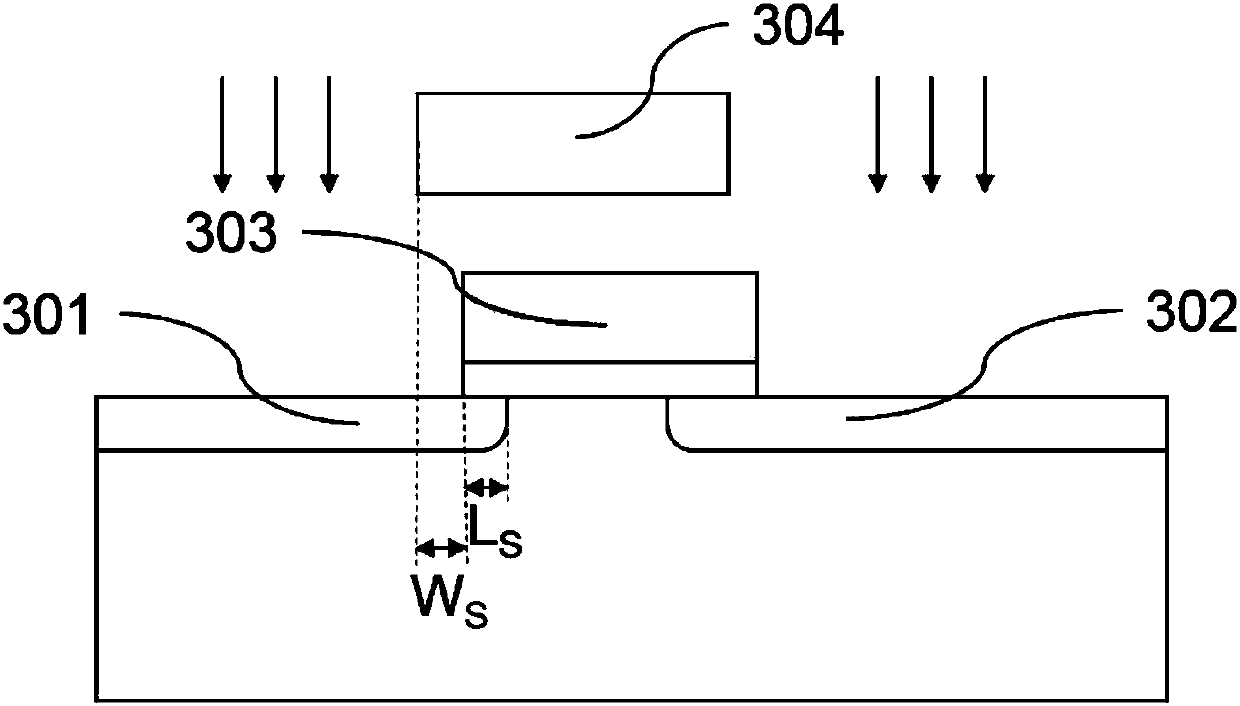A terahertz detector based on a non-self-aligned cmos structure
A terahertz detector and area technology, applied in the field of MOSFET and terahertz detector, can solve the problem of MOSFET terahertz detection performance degradation, etc., to improve the output voltage response RV, reduce the overlap capacitance, reduce the noise equivalent The effect of power
- Summary
- Abstract
- Description
- Claims
- Application Information
AI Technical Summary
Problems solved by technology
Method used
Image
Examples
Embodiment Construction
[0027] In order to make the content of the present invention clearer, the implementation manner of the present invention will be further described in detail below in conjunction with the accompanying drawings.
[0028] figure 2 It is a cross-sectional structure diagram of a MOSFET that can effectively improve the performance of a terahertz detector described in the present invention. The MOSFET device is fabricated on a p-type substrate 209, the two n-type doped regions are the source region 201 and the drain region 202, the heavily doped polysilicon region is the gate 203, and the gate and the substrate are SiO 2 layer 208, the MOSFET source region 201 and drain region 202 are distributed asymmetrically with respect to the polysilicon gate 203; figure 1 The length of the LDD 104 diffused to the gate region 103 in the traditional MOSFET source region produced by the self-aligned CMOS process technology shown; the overlapping area of the source region 201 and the gate regio...
PUM
 Login to View More
Login to View More Abstract
Description
Claims
Application Information
 Login to View More
Login to View More - R&D
- Intellectual Property
- Life Sciences
- Materials
- Tech Scout
- Unparalleled Data Quality
- Higher Quality Content
- 60% Fewer Hallucinations
Browse by: Latest US Patents, China's latest patents, Technical Efficacy Thesaurus, Application Domain, Technology Topic, Popular Technical Reports.
© 2025 PatSnap. All rights reserved.Legal|Privacy policy|Modern Slavery Act Transparency Statement|Sitemap|About US| Contact US: help@patsnap.com



